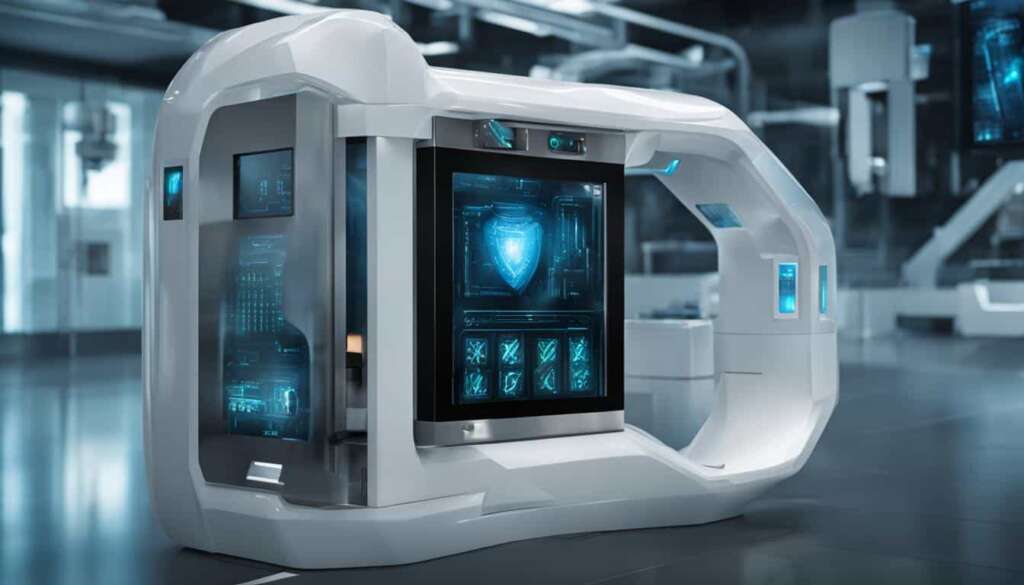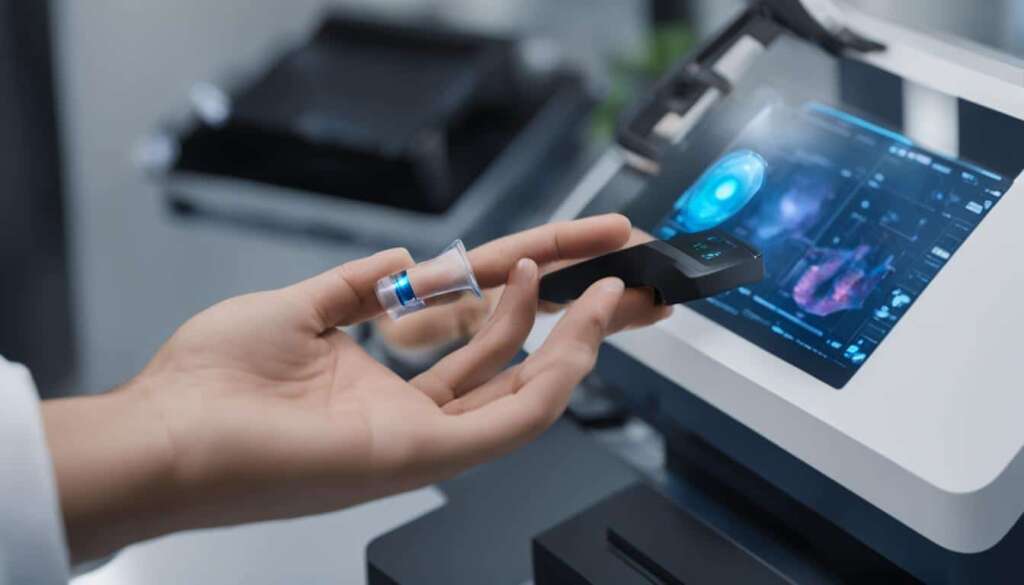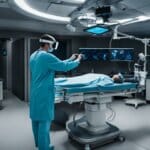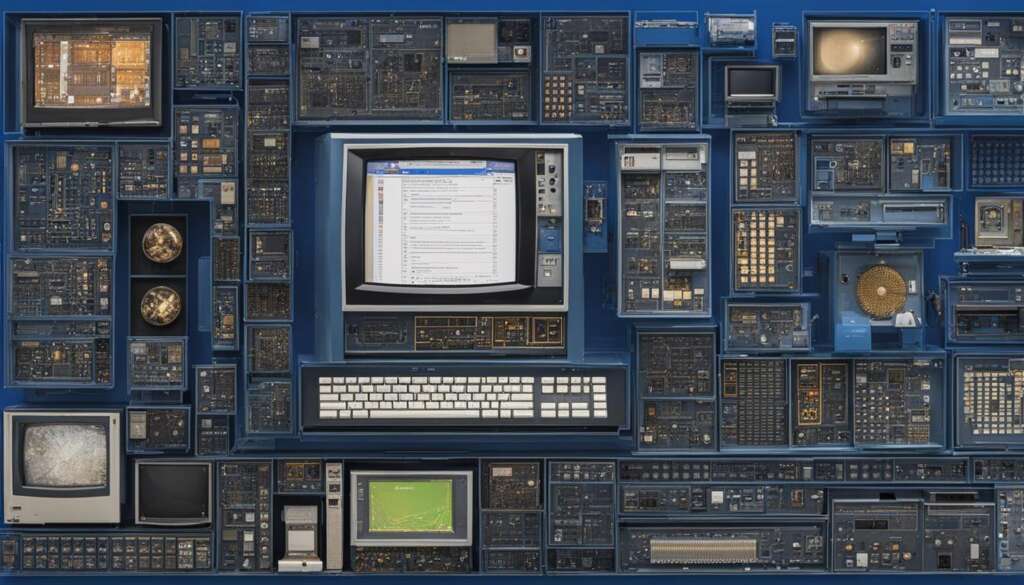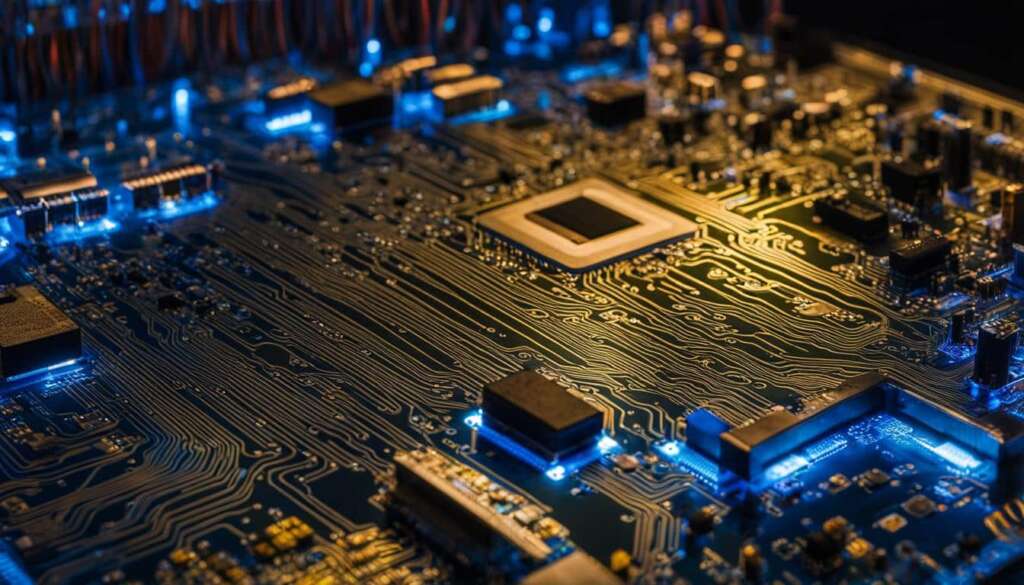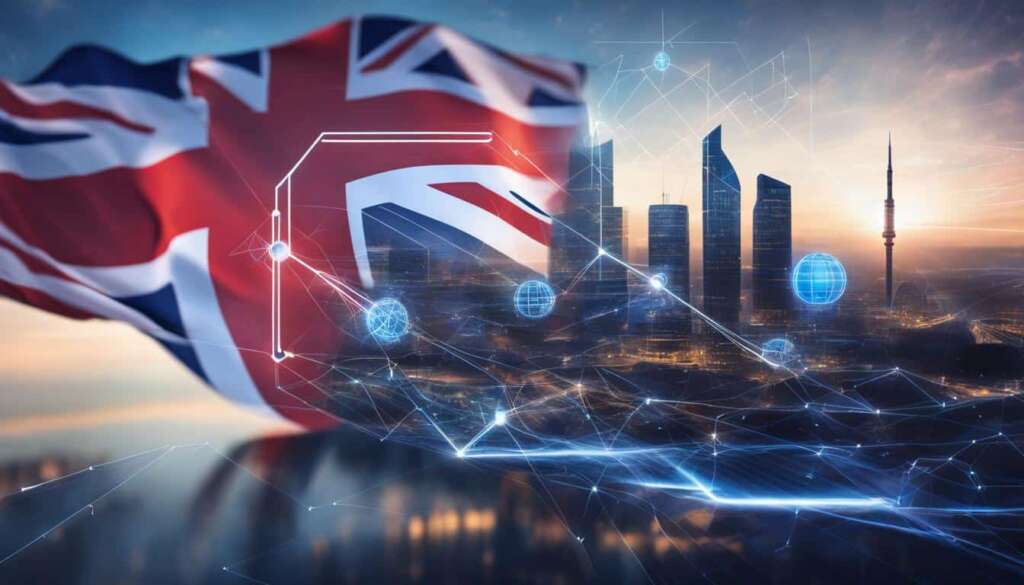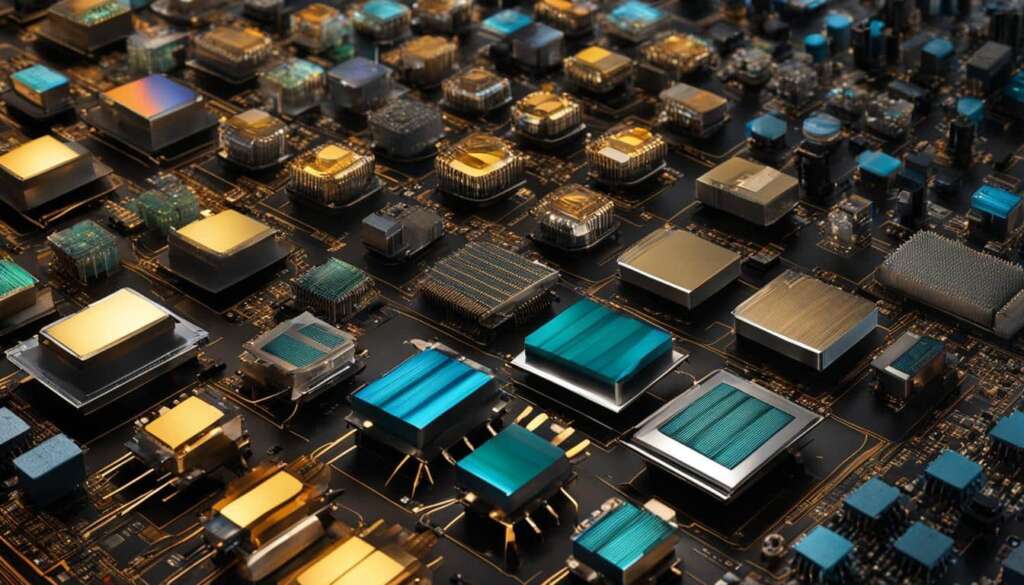Table of Contents
How Computer Vision is Transforming Industries? The transformative power of artificial intelligence (AI) is evident in today’s rapidly evolving world. Computer vision, a prominent subset of AI, empowers machines to comprehend and interpret visual data. The PC-based computer vision systems segment dominated the market in 2021, with a substantial share of over 52%. The global computer vision market was valued at $11.22 billion in 2021, and it is predicted to grow at a compound annual growth rate (CAGR) of 7% from 2022 to 2030.
The Importance of Computer Vision in Healthcare
Computer vision, a subset of artificial intelligence (AI), is revolutionizing the healthcare industry by enabling machines to comprehend and interpret visual data. With the help of mobile applications and computer vision tools powered by AI, patient monitoring has become more efficient, ensuring timely care and identifying potential risks. Additionally, computer vision algorithms analyze medical imaging data such as MRIs and CT scans, assisting in faster and more accurate diagnoses.
One of the key areas where computer vision shines in healthcare is in surgery planning. By leveraging computer vision technology, surgeons can obtain detailed 3D images that aid in precise and personalized surgical procedures, ultimately reducing risks and optimizing patient outcomes. Furthermore, computer vision plays a crucial role in automating cell counting, detecting infected cells, and monitoring hospital hygiene compliance, contributing to the overall improvement of patient care.
In summary, computer vision is transforming the healthcare industry by enhancing patient care, aiding in diagnosis, and improving surgical precision. With its ability to analyze medical imaging data and automate critical processes, computer vision is paving the way for more efficient and accurate healthcare practices.
| Application | Benefits |
|---|---|
| Patient Monitoring | Enables continuous monitoring and identification of potential risks |
| Surgery Planning | Aids in precise surgical procedures, reducing risks and improving outcomes |
| Automated Cell Counting | Enhances efficiency and accuracy in identifying infected cells |
| Hospital Hygiene Monitoring | Ensures compliance with hygiene protocols, improving patient safety |
“Computer vision in healthcare is transforming the way we provide patient care. The ability to analyze medical imaging data and automate critical processes enables faster and more accurate diagnoses, ultimately improving patient outcomes.” – Dr. Emily Thompson, Chief Medical Officer
The Importance of Computer Vision in Healthcare
Computer vision is not only transforming the healthcare industry but also revolutionizing patient care and diagnosis. By harnessing the power of artificial intelligence (AI), computer vision tools are enabling advanced applications in healthcare that were previously unimaginable. From patient monitoring to surgical planning, computer vision is enhancing the efficiency, accuracy, and safety of healthcare practices.
One of the key areas where computer vision is making a significant impact is medical imaging. Computer vision algorithms can analyze complex medical images, such as MRIs and CT scans, to aid in faster and more precise diagnoses. These algorithms can detect subtle abnormalities and assist healthcare professionals in making informed treatment decisions. This saves time, reduces the risk of misdiagnosis, and ultimately improves patient outcomes.
Another crucial aspect of healthcare where computer vision is proving invaluable is in the automation of routine tasks. Computer vision-powered tools can automate cell counting, detect infected cells, and monitor hospital hygiene compliance. By taking over these repetitive tasks, healthcare professionals can focus their time and expertise on more critical areas of patient care.
Computer vision is revolutionizing healthcare by providing innovative solutions for patient care, diagnosis, and automation. With its ability to interpret visual data and analyze complex medical images, computer vision is transforming healthcare practices, improving accuracy, and driving better patient outcomes.
Advancing Autonomous Systems with Computer Vision
Computer vision is playing a crucial role in advancing autonomous systems, particularly in the field of transportation. By leveraging computer vision algorithms, vehicles can analyze road situations, track vehicles and pedestrians, and predict their movements, enabling safer and more efficient autonomous driving.
One notable application of computer vision in transportation is in parking systems. Through the use of computer vision-powered cameras, vehicles can have a 360-degree view, making parking maneuvers easier and safer. Additionally, the integration of parking cameras with car cameras has the potential to revolutionize parking systems, allowing for automatic parking without human intervention.
Computer vision is also highly valuable in terms of security applications. Surveillance systems benefit greatly from computer vision algorithms, as they can detect and identify potential threats, enhancing overall security measures. Access control systems can also be bolstered by computer vision, accurately identifying individuals and ensuring secure entry.
Advantages of Computer Vision in Autonomous Systems:
- Enhanced road safety through the analysis of road situations and movement prediction.
- Improved parking experiences and increased parking efficiency with 360-degree view and automatic parking.
- Enhanced security through threat detection and accurate identification in surveillance and access control systems.
With the continuous advancements in computer vision technology, it is evident that the potential applications in autonomous systems, transportation, and security are vast. These advancements will contribute to creating a safer, more efficient, and automated future.
| Advantages of Computer Vision in Autonomous Systems | Application |
|---|---|
| Enhanced road safety | Analysis of road situations and movement prediction |
| Improved parking experiences | 360-degree view and automatic parking |
| Enhanced security | Threat detection and accurate identification in surveillance and access control systems |
Computer vision’s impact on autonomous systems is undeniable, and as the technology continues to advance, we can expect even greater innovations in transportation, parking, and security.
The Role of Computer Vision in Surveillance and Threat Detection
Computer vision technology has emerged as a powerful tool in the field of surveillance and threat detection. By leveraging advanced algorithms and image processing techniques, computer vision systems enable the automated analysis and interpretation of visual data, enhancing security measures and mitigating potential risks. From identifying unauthorized individuals to detecting early warning signs of potential threats, computer vision is revolutionizing the way we approach surveillance and security.
One of the key applications of computer vision in surveillance is the ability to simplify the process of data aggregation and search for specific events or individuals in recorded footage. Through intelligent video analytics, computer vision algorithms can automatically detect and track objects of interest, making it easier for security personnel to locate relevant information quickly. This capability significantly improves the efficiency and effectiveness of surveillance operations, allowing for prompt and appropriate action when needed.
Moreover, computer vision technology plays a crucial role in threat detection by enabling the automatic identification and reporting of unauthorized individuals. By integrating with visitor lists and databases, computer vision systems can accurately recognize faces and compare them against known profiles, alerting security personnel to potential security breaches. This proactive approach to threat detection enhances overall security measures and helps prevent incidents before they occur.
Additionally, computer vision technology offers the potential to detect potential fire hazards and issue early warnings. By analyzing video feeds from surveillance cameras, computer vision algorithms can identify smoke or flames in real-time, triggering immediate alerts and allowing for timely evacuation or intervention. This capability can be particularly valuable in high-risk environments where early detection is critical for effective fire prevention and response.
In conclusion, computer vision is revolutionizing surveillance and threat detection by providing advanced capabilities for automated analysis, interpretation, and detection of visual data. From simplifying data aggregation to detecting unauthorized individuals and identifying potential fire hazards, computer vision technology is a game-changer in enhancing security measures and ensuring public safety.
“Computer vision is revolutionizing surveillance and threat detection by providing advanced capabilities for automated analysis, interpretation, and detection of visual data.”
Enhancing Efficiency and Safety in Construction with Computer Vision
Computer vision is revolutionizing the construction industry, enhancing both efficiency and safety on job sites. By leveraging advanced algorithms and visual recognition technology, computer vision systems can assist in various aspects of construction, from project management to worker safety and quality assurance.
Improving Project Management
Computer vision aids in streamlining project management by utilizing building information modeling (BIM) data. By analyzing the data, computer vision systems can help calculate materials needed for construction, ensuring accurate project estimations and reducing waste. This not only enhances efficiency but also enables cost savings for construction companies.
In addition, drones equipped with computer vision systems play a crucial role in project monitoring and assessment. They can inspect ongoing projects, capturing high-resolution images and analyzing the quality of the work. This helps identify any potential errors or defects early on, allowing for timely intervention and ensuring the project stays on track.
Ensuring Worker Safety
Worker safety is a top priority in the construction industry, and computer vision technology contributes significantly to improving safety measures. Computer vision systems can monitor job sites in real-time, identifying potential hazards and ensuring compliance with safety regulations. This helps prevent accidents and reduces the risk of injury for construction workers.
Furthermore, computer vision can detect and analyze worker behavior, providing valuable insights into safety compliance. For example, it can track whether workers are wearing proper safety gear or if they are engaging in unsafe practices. By identifying non-compliance, computer vision systems enable proactive measures to be taken, preventing potential accidents and fostering a safer working environment.
Enhancing Quality Assurance
Computer vision plays a vital role in ensuring quality control and reducing errors in construction projects. By utilizing visual recognition technology, computer vision systems can identify defects or inconsistencies in materials, such as cracks or structural irregularities. This helps maintain the overall quality of the construction and minimizes the need for rework or repairs.
In addition, computer vision can monitor the condition of infrastructure elements, such as bridges or roads, in real-time. It can detect signs of wear and tear, structural damage, or potential weaknesses, allowing for timely maintenance and preventing accidents or costly repairs in the future.
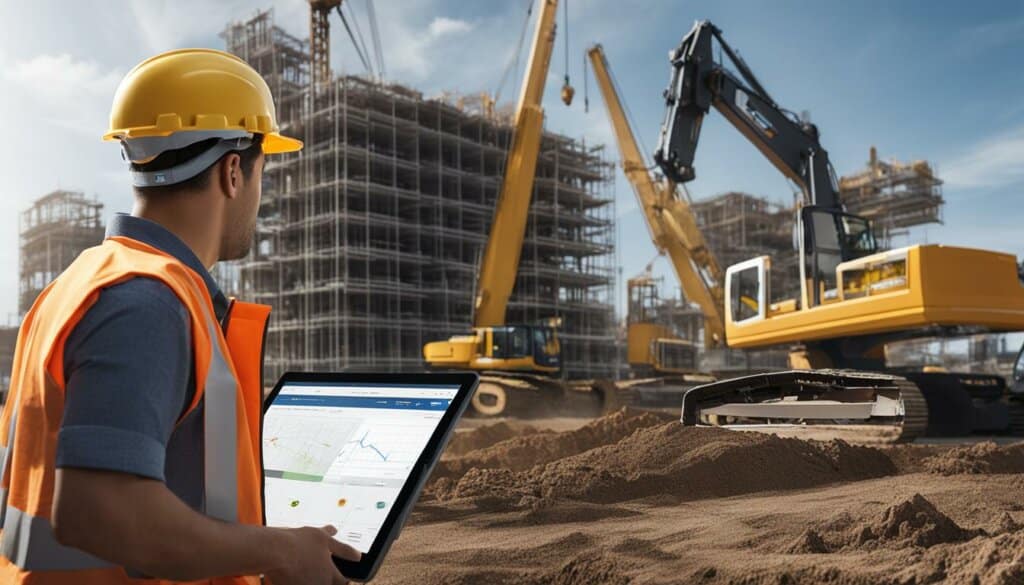
| Benefits of Computer Vision in Construction |
|---|
| Streamlines project management through accurate material calculation |
| Facilitates project monitoring and quality assessment using drones |
| Improves worker safety by identifying potential hazards and promoting compliance |
| Enhances quality assurance by detecting material defects and infrastructure weaknesses |
In conclusion, computer vision technology is revolutionizing the construction industry by enhancing efficiency, ensuring worker safety, and improving quality assurance. By leveraging visual recognition algorithms and real-time monitoring capabilities, computer vision systems enable construction companies to streamline project management, prevent accidents, and maintain high-quality standards. As the technology continues to advance, we can expect even more innovative applications of computer vision in construction, further driving progress and innovation in the industry.
The Potential of Computer Vision in Education
Computer vision is revolutionizing the field of education, offering exciting opportunities to enhance learning, interaction, and content moderation. One of the key applications of computer vision in education is in the realm of augmented reality (AR) and virtual reality (VR) technologies. These immersive experiences rely on computer vision algorithms for hand tracking, allowing students to engage with virtual objects and environments, making learning more interactive and memorable.
Computer vision also plays a crucial role in content moderation, ensuring the safety and appropriateness of online educational resources. With the help of computer vision algorithms, content platforms can automatically analyze and moderate user-generated content, filtering out explicit or harmful material. This technology enables educators to provide a secure and controlled learning environment for their students, free from inappropriate content.
Another remarkable application of computer vision in education is in exam proctoring. By utilizing computer vision algorithms, online exams can be monitored in real-time, ensuring fairness and integrity in the assessment process. Computer vision systems can detect potential cheating behaviors, such as looking away from the screen or using unauthorized materials, helping to maintain the validity of the examination.
Computer vision in education is still in its early stages, but its potential for transforming the way we teach and learn is undeniable. As technology continues to advance, we can expect to see further developments in AR and VR applications, content moderation, and exam proctoring. With these innovations, computer vision has the power to create more engaging and secure educational experiences for students around the world.
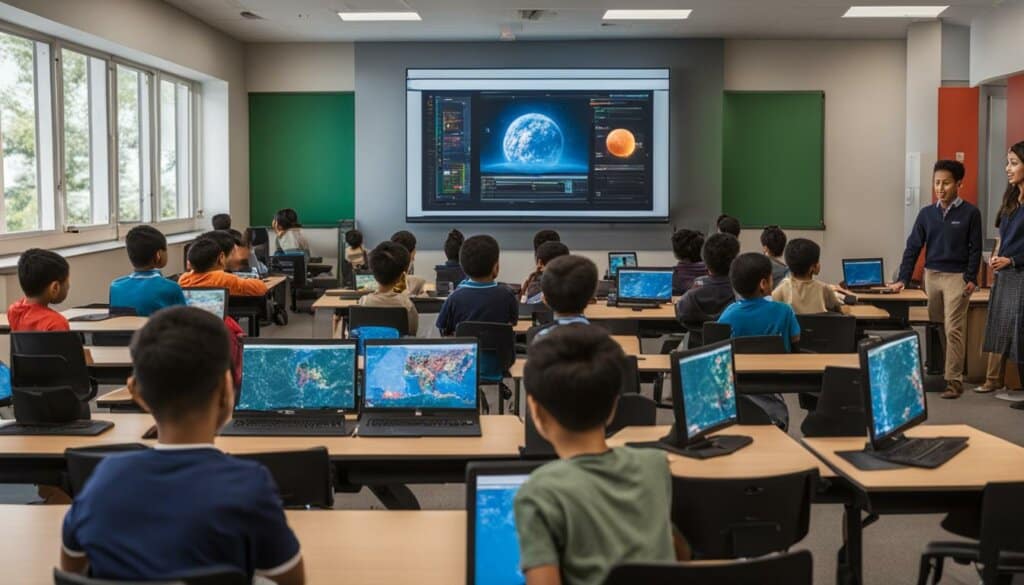
| Applications | Benefits |
|---|---|
| Augmented Reality (AR) and Virtual Reality (VR) | Enhanced learning experiences through immersive environments and interactive simulations |
| Content Moderation | Automatic analysis and filtering of explicit or harmful material in online educational resources |
| Exam Proctoring | Real-time monitoring of online exams to ensure fairness and integrity |
Enhancing the Customer Experience with Computer Vision in Retail
Computer vision is revolutionizing the retail industry by enhancing the customer experience through innovative technologies. One such technology is virtual mirrors, which allow customers to try on clothing or accessories virtually, eliminating the need for physical fitting rooms. With virtual mirrors, customers can see how different outfits look on them without the hassle of changing clothes. This not only saves time but also provides a convenient and personalized shopping experience.
But computer vision in retail goes beyond just virtual mirrors. It also enables retailers to analyze customer behavior and preferences. By using computer vision algorithms, retailers can track customer movements in stores, identify popular areas or products, and gain valuable insights for targeted marketing and personalized recommendations. This data-driven approach allows retailers to better understand their customers and provide them with customized shopping experiences.
Another exciting application of computer vision in retail is the advent of cashier-less stores and self-checkout systems. Powered by computer vision technology, these systems allow customers to scan and pay for their purchases without the need for human assistance. This not only streamlines the shopping process but also reduces waiting times and improves overall efficiency. As a result, customers can enjoy a seamless and frictionless retail experience that caters to their needs.
Overall, computer vision is transforming the retail industry by enhancing the customer experience in various ways. From virtual mirrors to personalized recommendations and cashier-less stores, computer vision technology is revolutionizing how we shop. As technology continues to advance, we can expect further innovations in retail that will continue to enhance the customer experience and drive the industry forward.
| Benefits of Computer Vision in Retail | Examples |
|---|---|
| Enhanced customer experience | Virtual mirrors, personalized recommendations |
| Improved efficiency | Cashier-less stores, self-checkout systems |
| Targeted marketing | Tracking customer behavior, analyzing preferences |
Computer Vision in Transportation and Logistics
Computer vision is revolutionizing the transportation and logistics industry, transforming the way goods are moved and managed. With the advent of driverless trucks, computer vision systems are playing a crucial role in addressing the driver shortage issue and making transportation more efficient.
Self-driving trucks equipped with computer vision technology are capable of autonomously navigating roads, detecting and responding to obstacles in real-time, and optimizing routes for maximum efficiency. These advanced systems utilize cameras and sensors to analyze the surrounding environment, enabling safe and reliable transportation of goods over long distances.
Computer vision also enhances logistics operations by monitoring the assembly sequences in manufacturing industries. By ensuring the correct sequence and identifying errors, computer vision systems contribute to improving productivity and reducing costs. Furthermore, computer vision enables instant anomaly detection in industrial infrastructure inspection, facilitating timely maintenance and minimizing downtime.
| Application | Benefits |
|---|---|
| Driverless Trucks | – Addresses driver shortage – Optimizes route planning – Enhances safety and efficiency |
| Assembly Sequences Monitoring | – Ensures correct sequence – Reduces errors and rework – Improves productivity |
| Industrial Infrastructure Inspection | – Instant anomaly detection – Facilitates timely maintenance – Minimizes downtime |
With the integration of computer vision into transportation and logistics, we can expect improved efficiency, enhanced safety, and cost-effective operations. As technology continues to advance, the potential applications of computer vision in this industry are boundless, opening up new opportunities for automation and optimization.
Computer Vision in Banking and Finance
Computer vision technology is making a significant impact on the banking and finance industry, revolutionizing various processes and enhancing overall efficiency. One of the key applications of computer vision in this sector is the Know Your Customer (KYC) verification process. With AI-powered computer vision algorithms, banks and financial institutions can automate the identification and verification of customer identification documents. This streamlines the KYC process, reduces human error, and ensures compliance with anti-money laundering (AML) and anti-terrorism financing (ATF) regulations.
By leveraging computer vision, banks can also enhance risk management and fraud detection. Computer vision systems can analyze patterns and anomalies in large datasets, helping identify potential fraudulent activities. This enables financial institutions to proactively mitigate risks and protect customer assets. Furthermore, computer vision can expedite insurance claim verification by automatically analyzing and validating claim documents. This not only reduces the processing time for claims but also minimizes the risk of fraudulent claims.
Another significant application of computer vision in banking and finance is in the development of self-driving cars. Computer vision algorithms play a crucial role in the autonomous driving systems of these vehicles, enabling them to accurately perceive the surrounding environment and make real-time decisions. This technology enhances safety and efficiency in transportation, potentially transforming the future of personal and commercial transportation.
| Applications of Computer Vision in Banking and Finance | Benefits |
|---|---|
| Automated KYC Verification | Efficient and compliant customer onboarding process |
| Fraud Detection and Risk Management | Proactive identification of fraudulent activities and risk mitigation |
| Insurance Claim Verification | Accelerated claims processing and reduced fraudulent claims |
| Development of Self-Driving Cars | Enhanced safety and efficiency in transportation |
Computer vision is increasingly becoming a game-changer in the banking and finance industry, empowering institutions to streamline processes, improve security, and provide enhanced services to their customers. As technology continues to advance, we can expect even more innovative applications of computer vision in this sector, further transforming the way financial services are delivered and revolutionizing the industry as a whole.
The Role of Computer Vision in Agriculture
Computer vision technology is revolutionizing the agriculture industry by providing innovative solutions for various challenges. From weed control to disease detection, computer vision systems offer valuable insights and tools for farmers to improve crop management and increase productivity.
One of the key applications of computer vision in agriculture is weed control. Traditional methods of weed management can be time-consuming and labor-intensive. However, computer vision algorithms can accurately identify and differentiate between crops and weeds, allowing for targeted spraying or mechanical weed removal. This not only reduces the use of herbicides but also ensures that crops receive the necessary nutrients and resources for optimal growth.
Disease detection is another crucial area where computer vision plays a significant role. By analyzing images of plants or crops, computer vision algorithms can detect early signs of diseases or pest infestations. This enables farmers to take immediate action, implementing appropriate measures to prevent the spread of diseases and minimize crop losses. Timely detection and intervention can save farmers both time and resources, ultimately leading to higher yields and better harvests.
| Application | Benefits |
|---|---|
| Weed Control | Targeted spraying, reduced herbicide use, improved crop health |
| Disease Detection | Early identification, timely intervention, reduced crop losses |
| Pest Management | Real-time monitoring, precise interventions, increased crop protection |
Pest management is yet another area where computer vision is making a difference. By continuously monitoring fields and crops, computer vision systems can detect the presence of pests or insects in real-time. This allows farmers to implement precise interventions, such as targeted spraying or release of beneficial insects, reducing the reliance on broad-spectrum pesticides and promoting sustainable pest control practices.
With the help of computer vision, agriculture is becoming more efficient, sustainable, and productive. By harnessing the power of algorithms and image analysis, farmers can optimize their operations, make informed decisions, and ensure the health and quality of their crops. As technology continues to advance, we can expect computer vision to play an even more significant role in shaping the future of agriculture.
References:
- “Computer Vision for Agriculture: A Review,” by Prasanna P. Patil et al.
- “Deep Learning for Visual Understanding in Agriculture: A Survey,” by Zhang et al.
- “Automated Weed Detection in Crops: A Review,” by Hemming et al.
Conclusion – How Computer Vision is Transforming Industries?
In conclusion, computer vision is revolutionizing numerous industries by enabling machines to interpret and understand visual data. With its ability to recognize objects and track movements, computer vision opens up new possibilities for automation, efficiency, and innovation. From healthcare and manufacturing to transportation and retail, computer vision is transforming the way we work and interact with technology.
While computer vision faces challenges like lighting variations and ethical considerations, its impact on our daily lives cannot be understated. As technology continues to advance, we can expect computer vision to play an even more critical role in solving complex problems and driving progress.
With its transformative power, computer vision is paving the way for a future where machines can perceive and comprehend the world around them. As industries continue to embrace this technology, we can look forward to a new era of innovation and advancements driven by computer vision’s capabilities.
FAQ – How Computer Vision is Transforming Industries?
What is computer vision?
Computer vision is a field of artificial intelligence that enables machines to comprehend and interpret visual data, recognize objects, and track movements.
How is computer vision transforming industries?
Computer vision is transforming industries by enabling automation, improving efficiency, enhancing safety, and driving innovation in various sectors.
What is the importance of computer vision in healthcare?
In healthcare, computer vision enables patient monitoring, faster and more accurate diagnoses through medical imaging analysis, surgery planning, cell counting, and infection detection.
How does computer vision enhance quality control in manufacturing?
Computer vision enhances quality control in manufacturing through the analysis of product materials, defect detection, trash sorting, worker safety monitoring, and quick decision-making on production lines.
What role does computer vision play in autonomous systems?
Computer vision plays a crucial role in autonomous systems by analyzing road situations, tracking vehicles and pedestrians, enabling safer parking maneuvers, and enhancing security applications.
How does computer vision improve surveillance and threat detection?
Computer vision improves surveillance and threat detection through automatic identification and reporting of unauthorized individuals, smoke detection, and secure access control systems.
How does computer vision enhance efficiency and safety in construction?
Computer vision aids in material calculation, worker safety monitoring, project inspection with drones, wind turbine blade monitoring, and assessing the quality of solar panels in the construction and energy sectors.
What is the potential of computer vision in education?
Computer vision has the potential to enhance learning and interaction in education through augmented reality and virtual reality technologies, content moderation, and exam proctoring.
How does computer vision improve the customer experience in retail?
Computer vision improves the customer experience in retail through virtual try-on technologies, analyzing customer behavior and preferences, and enabling cashier-less stores and self-checkout systems.
What role does computer vision play in transportation and logistics?
Computer vision plays a role in transportation and logistics through self-driving trucks, optimized routes, assembly sequence monitoring, and industrial infrastructure inspection.
How does computer vision benefit the banking and finance industry?
In the banking and finance industry, computer vision automates the verification of identification documents, assists in risk management and insurance claim verification, and contributes to the development of self-driving cars.
How is computer vision transforming agriculture?
Computer vision is transforming agriculture by addressing weed control, disease and insect infestation, soil quality monitoring, crowd counting for social distancing, and enhancing law enforcement and public safety.
What is the role of computer vision in various industries?
Computer vision plays a vital role in various industries by enabling automation, efficiency, and innovation through visual data interpretation, object recognition, and movement tracking.
Source Links – How Computer Vision is Transforming Industries?


